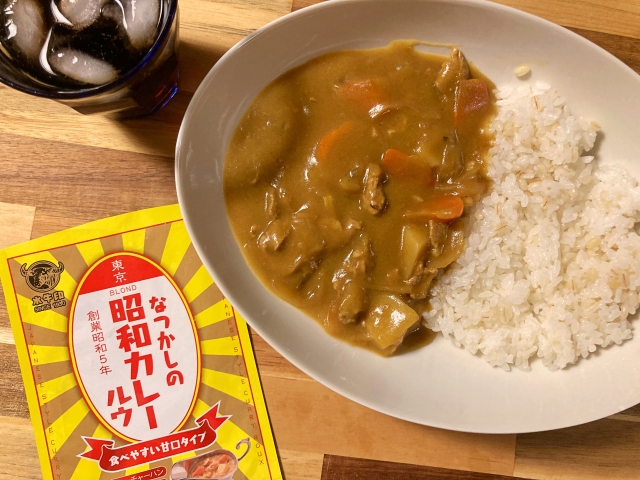
Our Japanese-language reporter had no idea what to expect.
No matter what era you grew up in, there are always going to be times you look back on your youth fondly, and for some of us, the best memories center around food. And while we can’t go back in time to relive those memories, we can bring them to life by recreating those foods and their nostalgic flavors.
That’s why our Japanese-language reporter Aoi Kuroneko was excited to find a “Natsukashi no Showa Curry Roux” (“Nostalgic Curry Roux”), which recreates the flavor of curry from the Showa era (1926 to 1989). Though Aoi, who was born in 1985, isn’t quite old enough to have seen much of the Showa era, she found this product intriguing. What did Showa-era curry taste like? Is it different from curry today? Aoi couldn’t wait to find out.
But first, did you know that curry powder first arrived in Japan in the Meiji period? There’s actually Meiji-era roux that you can try out. Curry was introduced to Japan in 1905, so perhaps by the time the Showa period rolled around, it was already close to the version of curry that we know and love today. Just in case, Aoi checked the instructions on the back of the package to make sure she had everything she needed.
The recommended ingredients were meat of your choice, onions, carrots, potatoes, and of course the Showa Curry Roux. Hm…so exactly the same as curry today. The only difference was probably that the Showa curry roux was in powder form and not the blocks that many Japanese curry roux come in.
Even though it seemed like she’d be making curry like always, Aoi made sure to follow the instructions on the back of the package. The first step was to cut the ingredients into whatever size she preferred.
Then she fried up the vegetables and meat…
And poured in water, brought it to a boil, and simmered it until cooked. Then she turned off the heat and added the roux before turning the heat back on to low.
In short, the preparation steps were exactly the same as present-day curry, which was kind of a let-down. Aoi had expected something slightly more…Showa about it. Perhaps if she had one of these metal servers to put the finished product in?
Well, perhaps the Showa-ness would come out in the flavor. The finished curry did have a slightly yellower tint to it than most present-day Japanese curries. Ready to find out if it tasted any different, Aoi took her first bite…
It was very similar to a ready-made curry for kids since its spices were very faint. It wasn’t spicy at all, which made it kind of mysterious. With most curries today, the flavor and fragrance stick with you for a little bit after eating it, especially on your breath. But there was none of that with this curry. It had a very clean aftertaste, and Aoi guessed that she would be able to have a meeting with an important business client five minutes after eating a bowl of Showa curry without worrying about her breath.
While a lot of the “best curries” these days have complex spice mixes, hidden flavors, or luxury ingredients in them and are meant to stimulate all five senses, this curry is, by contrast, completely unremarkable, but in absolutely the best way possible. It’s a curry that doesn’t assert itself too strongly, which is actually a nice change, especially if you want something a little lighter on the palate. Aoi could confidently say that she’d never eaten a curry like that before; it was a very interesting experience.
The other thing that pleasantly surprised her about this curry was that, despite it being a powder, it didn’t form into clumps or have any trouble dissolving. It was very quickly and smoothly incorporated into the water. Also, the package was super easy to open, which is always a benefit. The ease of making this curry makes it fit surprisingly well into the busy lives of the people of Reiwa. Perhaps Showa Curry is as timeless as curry itself.
Images © SoraNews
● Want to hear about SoraNews24’s latest articles as soon as they’re published? Follow us on Facebook and Twitter!
[ Read in Japanese ]

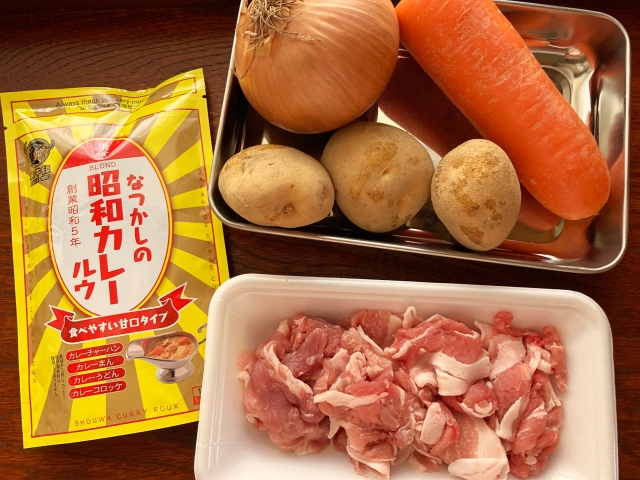
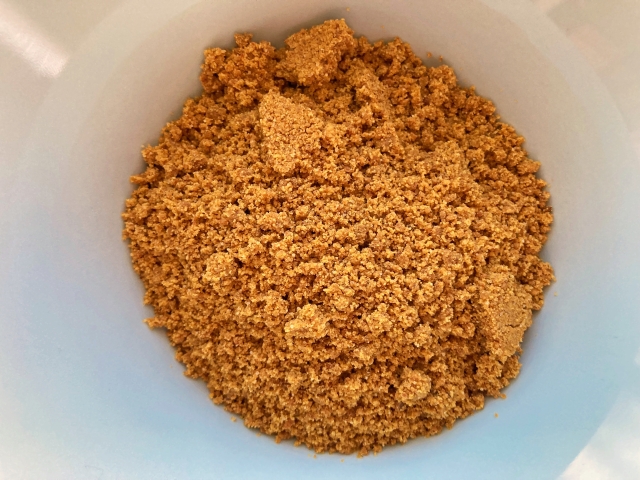
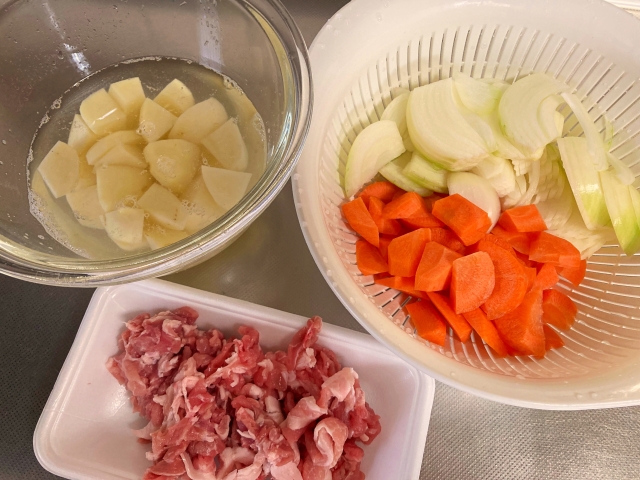
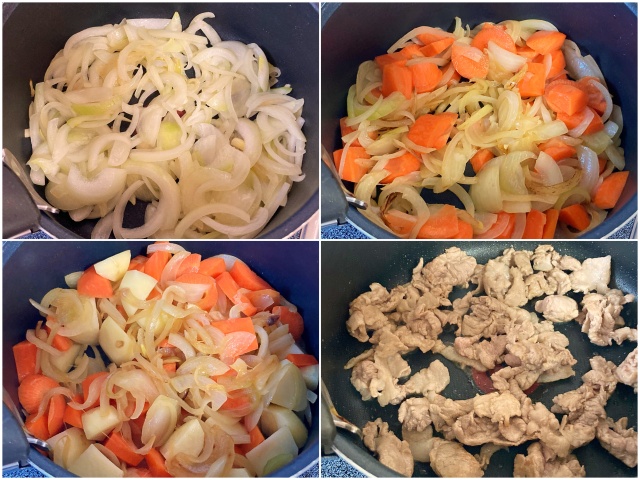
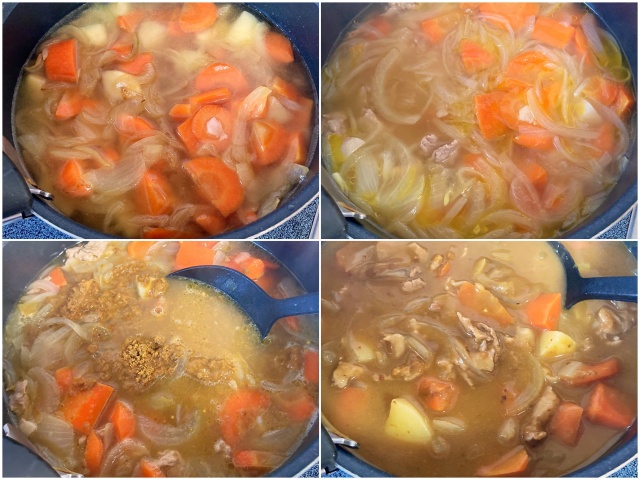
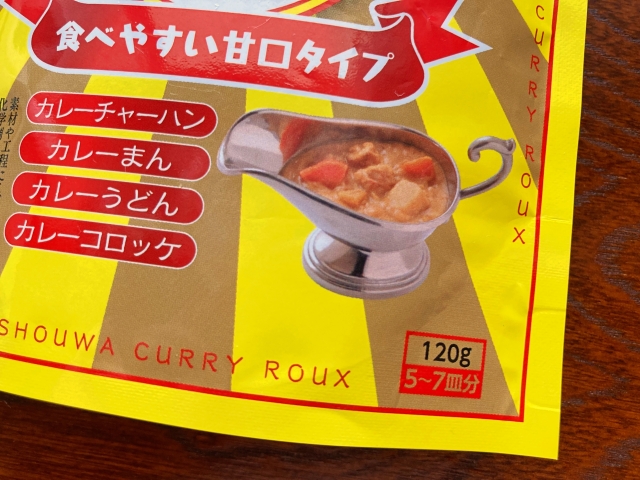

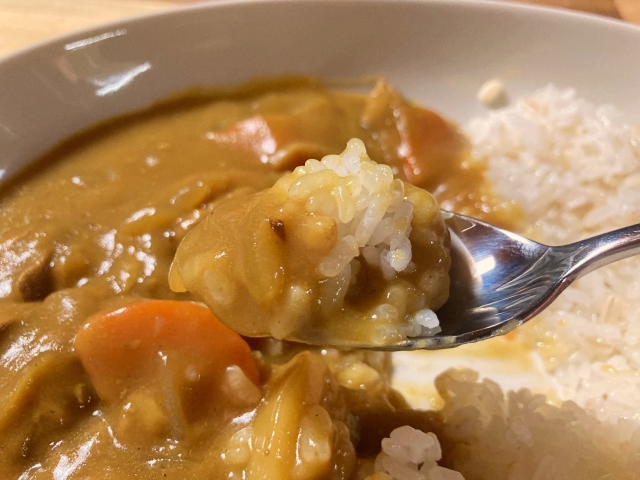
 What did Japanese curry taste like 150 years ago? This instant curry pack lets you find out
What did Japanese curry taste like 150 years ago? This instant curry pack lets you find out Here’s what happens when you mix 75 types of Japanese instant curry together【SoraKitchen】
Here’s what happens when you mix 75 types of Japanese instant curry together【SoraKitchen】 Here’s what happens when you mix all 53 kinds of Muji curry into one crazy super curry【Taste test】
Here’s what happens when you mix all 53 kinds of Muji curry into one crazy super curry【Taste test】 Here’s the oldest recipe for Japanese curry in existence, and how it tastes【SoraKitchen】
Here’s the oldest recipe for Japanese curry in existence, and how it tastes【SoraKitchen】 We mixed 43 different kinds of Japanese curry together to make The King of Curries
We mixed 43 different kinds of Japanese curry together to make The King of Curries Starbucks Japan ready to get Year of the Horse started with adorable drinkware and plushies【Pics】
Starbucks Japan ready to get Year of the Horse started with adorable drinkware and plushies【Pics】 We found possibly the quietest Japanese-style hotel in Tokyo’s bustling Shinjuku district
We found possibly the quietest Japanese-style hotel in Tokyo’s bustling Shinjuku district More Than a Capsule Stay: Why Solo Travelers Choose “global cabin Yokohama Chinatown”
More Than a Capsule Stay: Why Solo Travelers Choose “global cabin Yokohama Chinatown” Hello Kitty Choco Egg figures are an adorable trip through three periods of Japanese pop culture【Pics】
Hello Kitty Choco Egg figures are an adorable trip through three periods of Japanese pop culture【Pics】 Beautiful sightseeing boat is a floating tea ceremony venue in east Japan’s best hot spring town
Beautiful sightseeing boat is a floating tea ceremony venue in east Japan’s best hot spring town 7 great places to see Mt. Fuji from without having to climb it
7 great places to see Mt. Fuji from without having to climb it Survey finds more than 70 percent of Japanese children have an online friend
Survey finds more than 70 percent of Japanese children have an online friend New Japanese menstrual product seeks to help women spot unidentified iron deficiencies
New Japanese menstrual product seeks to help women spot unidentified iron deficiencies Design-your-own-Pokémon-T-shirt service launches at Uniqlo, dozens of species to work with【Pics】
Design-your-own-Pokémon-T-shirt service launches at Uniqlo, dozens of species to work with【Pics】 Japanese thug wear from Birth Japan perfect for those breaking bad next year
Japanese thug wear from Birth Japan perfect for those breaking bad next year Disillusionment at Tsukiji’s tourist-target prices led us to a great ramen restaurant in Tokyo
Disillusionment at Tsukiji’s tourist-target prices led us to a great ramen restaurant in Tokyo Japan may add Japanese language proficiency, lifestyle classes to permanent foreign resident requirements
Japan may add Japanese language proficiency, lifestyle classes to permanent foreign resident requirements Lacquerware supplier to emperor of Japan and Pokémon team up for new tableware
Lacquerware supplier to emperor of Japan and Pokémon team up for new tableware Starbucks Japan releases new zodiac chilled cup drink for 2026
Starbucks Japan releases new zodiac chilled cup drink for 2026 7-Eleven Japan’s ramen-cooking robot whipped us up a bowl of noodles【Taste test】
7-Eleven Japan’s ramen-cooking robot whipped us up a bowl of noodles【Taste test】 Cyberpunk anime meets traditional culture in Ghost in the Shell gold leaf Japanese changing screens
Cyberpunk anime meets traditional culture in Ghost in the Shell gold leaf Japanese changing screens Japan’s otoshidama tradition of giving kids money at New Year’s gets a social welfare upgrade
Japan’s otoshidama tradition of giving kids money at New Year’s gets a social welfare upgrade Japan’s human washing machines will go on sale to general public, demos to be held in Tokyo
Japan’s human washing machines will go on sale to general public, demos to be held in Tokyo 7-Eleven Japan starts new temporary luggage storage service in over 300 branches
7-Eleven Japan starts new temporary luggage storage service in over 300 branches Starbucks teams up with 166-year-old Kyoto doll maker for Year of the Horse decorations【Photos】
Starbucks teams up with 166-year-old Kyoto doll maker for Year of the Horse decorations【Photos】 Tokyo considering law requiring more trash cans following litter increase in heavily touristed area
Tokyo considering law requiring more trash cans following litter increase in heavily touristed area Tokyo’s Tsukiji sushi neighborhood asks tour groups to stay away for the rest of the month
Tokyo’s Tsukiji sushi neighborhood asks tour groups to stay away for the rest of the month Nintendo’s Kirby now delivering orders at Kura Sushi restaurants, but not in Japan
Nintendo’s Kirby now delivering orders at Kura Sushi restaurants, but not in Japan Tokyo event lets you travel back in time, for free, to celebrate 100 years since Showa era start
Tokyo event lets you travel back in time, for free, to celebrate 100 years since Showa era start Sanrio theme park in Japan announces plans to expand into a Sanrio resort
Sanrio theme park in Japan announces plans to expand into a Sanrio resort Stamina-destroying “Paralysis Noodles” are Tokyo’s newest over-the-top ramen innovation
Stamina-destroying “Paralysis Noodles” are Tokyo’s newest over-the-top ramen innovation Survey asks foreign tourists what bothered them in Japan, more than half gave same answer
Survey asks foreign tourists what bothered them in Japan, more than half gave same answer Japan’s deadliest food claims more victims, but why do people keep eating it for New Year’s?
Japan’s deadliest food claims more victims, but why do people keep eating it for New Year’s? We deeply regret going into this tunnel on our walk in the mountains of Japan
We deeply regret going into this tunnel on our walk in the mountains of Japan Studio Ghibli releases Kodama forest spirits from Princess Mononoke to light up your home
Studio Ghibli releases Kodama forest spirits from Princess Mononoke to light up your home Major Japanese hotel chain says reservations via overseas booking sites may not be valid
Major Japanese hotel chain says reservations via overseas booking sites may not be valid Put sesame oil in your coffee? Japanese maker says it’s the best way to start your day【Taste test】
Put sesame oil in your coffee? Japanese maker says it’s the best way to start your day【Taste test】 No more using real katana for tourism activities, Japan’s National Police Agency says
No more using real katana for tourism activities, Japan’s National Police Agency says The top 10 annoying foreign tourist behaviors on trains, as chosen by Japanese people【Survey】
The top 10 annoying foreign tourist behaviors on trains, as chosen by Japanese people【Survey】 Starbucks Japan reveals new sakura drinkware collection, inspired by evening cherry blossoms
Starbucks Japan reveals new sakura drinkware collection, inspired by evening cherry blossoms We put weird food in curry to make it “un-curry-like”, find a killer secret ingredient instead
We put weird food in curry to make it “un-curry-like”, find a killer secret ingredient instead We spice up our fermented soybeans with curry powder flavored natto【Taste Test】
We spice up our fermented soybeans with curry powder flavored natto【Taste Test】 Japanese instant curry promises flavor of day-old curry right away, and that’s a very good thing
Japanese instant curry promises flavor of day-old curry right away, and that’s a very good thing Does the Blue Mt Fuji Curry taste as terrifying as it looks?
Does the Blue Mt Fuji Curry taste as terrifying as it looks? We make our own version of Japan’s new Yakisoba Gyudon Omu Curry MIX bowl
We make our own version of Japan’s new Yakisoba Gyudon Omu Curry MIX bowl Japanese automaker Suzuki now makes instant curry, but does it rev our foodie engines?【Taste test】
Japanese automaker Suzuki now makes instant curry, but does it rev our foodie engines?【Taste test】 Osaka’s ultra-expensive instant Kiwami Curry: Worth the price?【Taste test】
Osaka’s ultra-expensive instant Kiwami Curry: Worth the price?【Taste test】 This is Japan’s oldest curry bread bakery, and it’s awesome【Taste test】
This is Japan’s oldest curry bread bakery, and it’s awesome【Taste test】 You need this instant Japanese curry rice if you hate cooking but want to eat a balanced diet
You need this instant Japanese curry rice if you hate cooking but want to eat a balanced diet Instant bear curry from the northeastern mountains of Japan【Taste test】
Instant bear curry from the northeastern mountains of Japan【Taste test】 How to use leftover Japanese curry: We test out a recipe for curry bread quiche【SoraKitchen】
How to use leftover Japanese curry: We test out a recipe for curry bread quiche【SoraKitchen】 After trying 2,500 different kinds of Japanese curry, these experts have picked the top three
After trying 2,500 different kinds of Japanese curry, these experts have picked the top three A new way to enjoy a cuppa: We try making curry with tea-brewed rice【SoraKitchen】
A new way to enjoy a cuppa: We try making curry with tea-brewed rice【SoraKitchen】 We tried cocoa soy-sauce paste and opened up a whole new world of possibilities【Taste test】
We tried cocoa soy-sauce paste and opened up a whole new world of possibilities【Taste test】 Reflecting on an old red-light district in Tokyo as another landmark closes its doors forever
Reflecting on an old red-light district in Tokyo as another landmark closes its doors forever
Leave a Reply